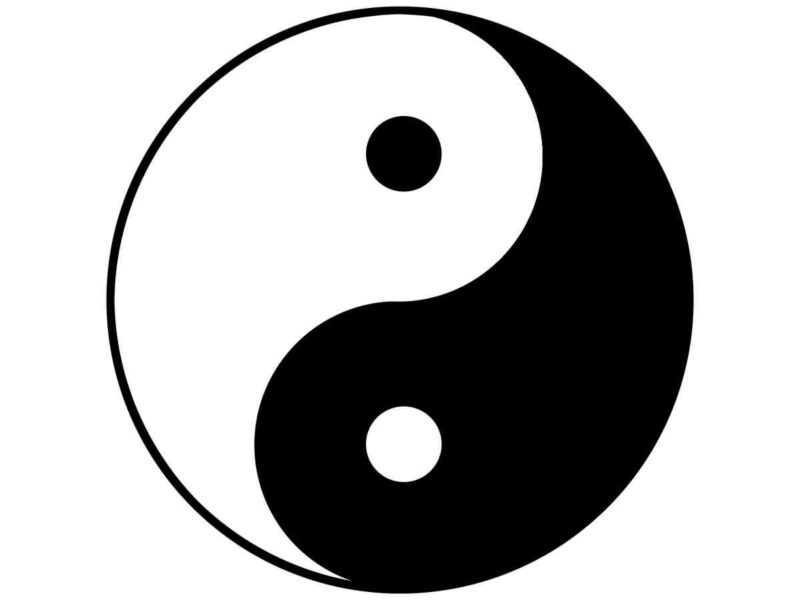An Eternal Cycle of an Essential Hierarchy
Humans suffer from having big brains. In them, thoughts of the future or past are as vivid as what we are perceiving in front of us; we are therefore haunted by possibilities, both good and bad, and tend to take refuge in the tangible — especially socializing — instead of facing the ambiguity.
Most people hide out in what is tangible, even in the abstract. Materialism relies on the physical tangible, but symbolism makes the abstract tangible in a mental form, producing concepts we can easily understand and manipulate. This turns out to be addictive.
This moment right now is tangible. The physical objects and sensations here are as well. So are big symbols like equality and peace. But time, death, mystery, and the future are intangible, much like the practice of predicting the results of our actions based on the interaction between principles.
Most people can handle one force. Gravity is tangible; someone hitting a ball is tangible. Gravity plus the ball is within range for most. Gravity, the ball, the bat, and the set of circumstances that caused someone to hit it baffle all but a few.
The Christian view moralizes life and makes it tangible. Instead of a mechanistic universe, you get one with a human-like god who is making choices through His personality. The Asian view symbolized by the yin-yang sees life as a battle between good and bad.
A nihilist leaves this nonsense behind, both sets of it. Life is cause-effect. If you hit the ball, it is going to zoom off somewhere, even if out of your control (depending on the skill behind the hit). If you do not plant crops for next season, you starve and wolves gnaw your bones. Straightforward.
Neither Christian nor Asiatic view makes much sense. The former moralizes a world that is strictly functional, and the latter ignores the need for mental organization of the individual. The Christian view is closer to having mental organization, but obstructs it with moralism.
All of our past ways have failed because they were based on broken-down versions of the original. Our original Proto-Indo-European Religion was based on the idea of knowing how the world works, and offering to the gods for fortune which favored the competent, not the moral.
Most likely both the Christian and Asian view descended from this clearer ancient idea. It saw life as a ceremony of opposites, as Plato and Anton Long do. Death brings life, and life brings death. The cycle manifests its next iteration by undoing itself to redo itself.
The ancients saw a world divided into phenomena and noumena. The former are effects, which we measure through appearance, and the latter are causes, which we can only access through analysis including abstract methods like mathematics and philosophy.
In particular, the noumena was seen as one big thing with many parts, a mechanical and yet naturalistic godness like gravity. It simply operated. We are here for the ride. If anything exists after death, it recycles our souls like soil recycles dead leaves.
This scares people because it is intangible, therefore obviously perceivable by only a few. Simple facts like 2+2=4 are safe for everyone, or just about everyone; abstractions and the intangible make sense to very few and there is no uniform view to make them “safe” for followers.
That immediately creates a hierarchy based on who perceives more than others. All of modernity consists of rebellion against culture, because culture affirms principles honored by time and therefore, rewards those who understand and act according to those.
The rest of the herd finds itself relegated to the cheap seats where no one cares what they have to say because they are mentally disordered. We inverted society with equality, and now we can hear nonsensical gibberish, lies, and drivel everywhere we go with intelligent thought marginalized to an extreme.
Hierarchy occurs whenever there is a goal, and points toward a goal. Whatever the intelligent can discern shows us where opportunity lies, and therefore, indicates what we should probably be doing. That means the herd has to fall into line and work together toward this goal, which they hate.
Even more, hierarchy points toward a meaning of life. Christianity and Asian faiths rely on writing on the wall and other forms of symbolism for meaning; the real meaning of life is determined by observing how it works and what creates beauty in it. That is not accessible to all.
In other words, life has no meaning, which is its meaning, but it also consists of reality, which means that certain behaviors are rewarded. In the same way that natural selection is mathematical, the meaning of life is as well: some things work better than others.
Nature tells us exactly how to discern meaning. The constant struggle between order and disorder produces something we might call meta-good, or the opportunity to be alive, make choices, and pick things of more quality than the others.
What defines quality? The context, as usual: quality occurs because of degree of adaptation to the whole of the system, and thus elegance, efficiency, and form following function. Mental clarity is the highest good, and it arises from knowing reality.
How does this tell us what is meaningful? If life makes sense, there is a purpose to it, which is to make sense of ourselves and make our thinking sensible. There, in the grand esoteric tradition, we begin the path in search of invisible and intangible aspects of reality that show higher meaning.
We are probably going to see a new spirituality emerge which replaces the symbolic religions with amoral ones based on cause-and-effect. In those, knowledge of the gods will not be for everyone. It will be like the rest of life, ephemeral moments of clarity in a search for knowledge.
Tags: cause-effect, faith, noumena, phenomena, religion, symbolism










